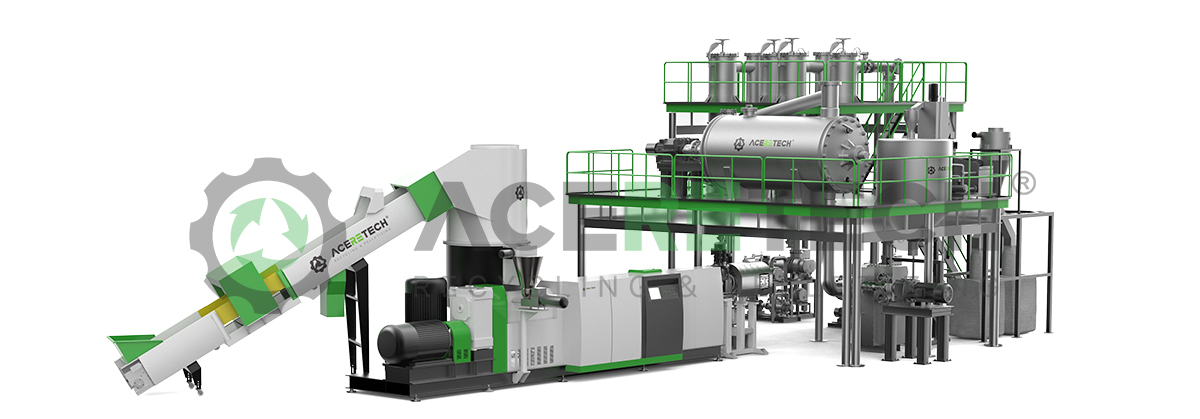In some high-end applications (such as beverage bottle recycling, high-performance fibers, etc.), it is necessary to increase the intrinsic viscosity (IV value) of PET. The inherent viscosity of PET directly affects its molecular weight and mechanical properties. The IV value of recycled PET usually decreases by 0.05-0.15dl/g after melt processing, so its performance needs to be restored through a thickening process. The main IV thickening technologies can be divided into two categories: solid-state thickening and liquid-phase thickening:
1. Solid-State Polycondensation (SSP)
Solid-State thickening is the most mature PET thickening technology in the industry. It increases the molecular chain length by causing PET particles to undergo solid-phase polycondensation reaction at a temperature above the glass transition temperature and below the melting point.
Typical SSP system composition:
- Pre-crystallizer: first heat the PET particles to 160-180℃ to prevent agglomeration during subsequent processing
- Preheating tower: temperature rises to 190-210℃ to activate the end groups
- Reaction tower: core equipment, temperature controlled at 210-230℃, reacting for 8-16 hours under nitrogen or vacuum environment
- Cooling tower: cool the product to below 50℃
- Gas purification system: handle by-products acetaldehyde and ethylene glycol
Process characteristics:
- IV value can be increased from 0.72dl/g to 0.80-1.0dl/g
- Acetaldehyde content can be reduced to below 1ppm
- Relatively low energy consumption (about 0.3-0.5kWh/kg)
- Suitable for large-scale continuous production
2. Liquid State Polymerization Equipment System)
Liquid phase viscosity enhancement technology refers to the polycondensation reaction in the molten state above the melting point of PET (usually 275-295℃), which is suitable for special applications requiring higher IV values (>1.0dl/g).
Main technical routes:
- Reactor system:
- Series reactor design
- High vacuum environment (<1mbar)
- Residence time 2-4 hours
- IV 1.2dl/g can be achieved
- Thin film reactor technology:
- Melt forms a thin film to increase the surface area
- Enhance mass transfer and by-product removal
- Reaction time is shortened to 30-60 minutes
- Represented by the Discage reactor of Barmag, Germany
- Extrusion reaction technology:
- Completed in a dedicated reaction extruder
- Add chain extenders (such as epoxies, oxazolines)
- Suitable for small batch multi-variety production
Process comparison:
| Parameters | Solid-state thickening | Liquid-phase thickening |
| Reaction temperature | 210-230℃ | 275-295℃ |
| IV increase range | 0.75→0.85-1.0 | 0.75→1.0-1.3 |
| Reaction time | 8-16 hours | 2-4 hours |
| Equipment investment | Medium | High |
| Energy consumption | Low | High |
| Product quality | Low acetaldehyde content | Possibly slightly darker color |
3. Recommendations for technology selection
- Beverage bottle grade rPET: SSP route is recommended to meet the IV requirement of 0.80-0.85dl/g, while controlling the acetaldehyde content
- Industrial yarn grade: SSP or mild liquid phase thickening can be used, with a target IV of 0.90-1.0dl/g
- High-end uses such as tire cord: liquid phase thickening LSP is required to obtain high IV products above 1.2dl/g
- Small batch specialty products: reactive extrusion technology can be considered to flexibly adjust the formula
The latest development trends include innovative methods such as microwave-assisted SSP technology and supercritical fluid thickening process, which can further shorten the reaction time and improve energy efficiency. When selecting thickening equipment, key factors such as target IV value, production capacity requirements, energy consumption indicators and product use need to be considered comprehensively.